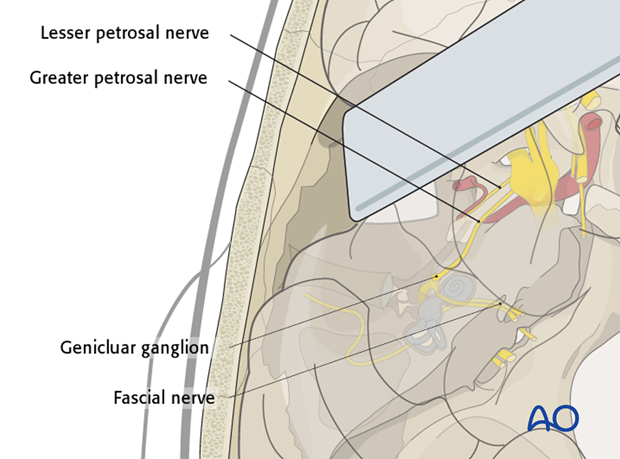Lateral skull base approach (“middle fossa approach”)
1. Patient positioning
Place the patient in a supine position on the operating table. Fix the head with a head holder. Turn the head such that the malar eminence it the highest point. It is useful to place a shoulder roll in order to prevent excessive strain on the cervical spine.
In this position the frontal lobes fall away from the floor of the frontal cranial fossa and thereby avoiding unnecessary retraction.
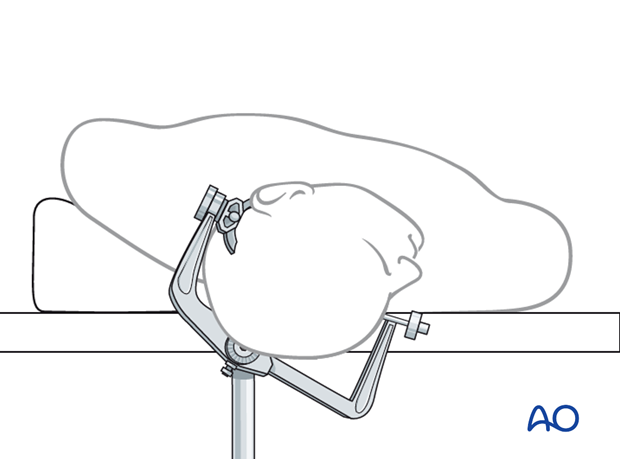
2. Access area
With the lateral skull base approach the lateral anterior and the middle cranial fossae can be reached. The lateral skull base approach is generally the approach of choise to repair CSF leak associated with lateral skull base trauma.
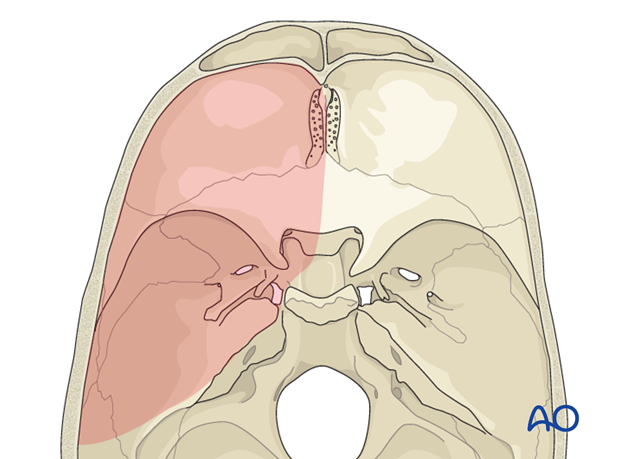
3. Skin incision
A skin incision in the shape of a question mark is made from a skin crease anterior to the tragus to the midline of the skull. If possible, it should not cross the hairline.
Depending on the fracture also alternative skin incisions are possible. The dashed line shows one such alternative incision.
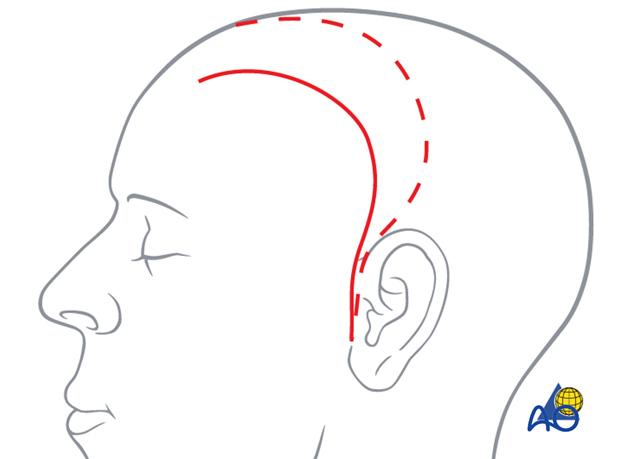
4. Elevation of the scalp
The scalp is elevated in two layers splitting the temporal fat pad. The superficial fat pad, which contains the frontal branches of the facial nerve, is preserved and carefully elevated with the galeal layer.
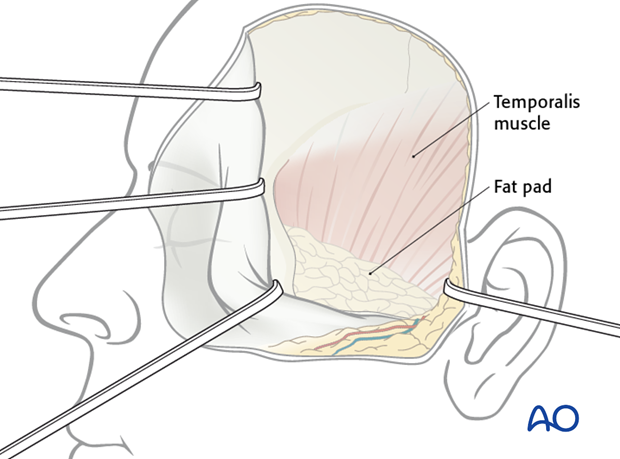
5. Incision of the temporal fascia and temporal muscle
A T-shaped incision is made cutting the temporal fascia (1) and along the axis (2) of the muscle itself in order to create a posterior musculofascial flap. This can be used for reconstruction.
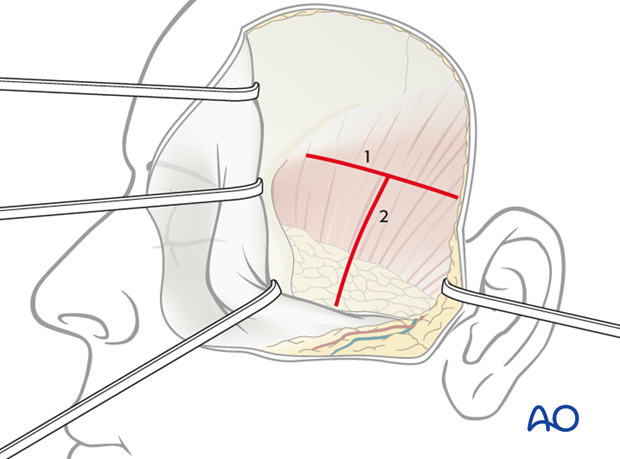
You should save a cuff of a fascia and temporal muscle over the temporal line (1) in order to suture the temporalis muscle at the end of the procedure.
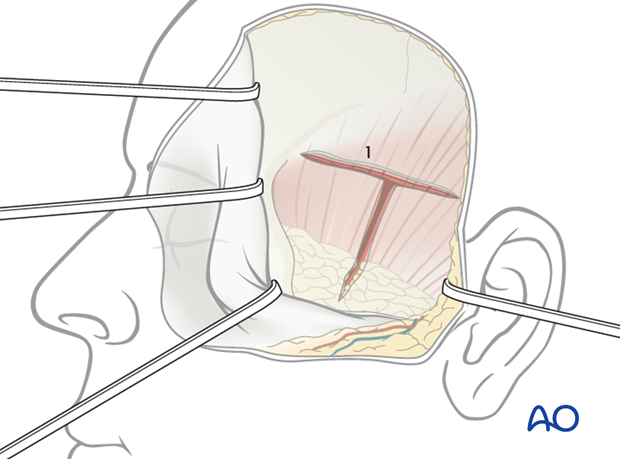
6. Handling of temporal muscle
Elevate the muscle subperiosteally and reflect the temporal flap anteriorly.
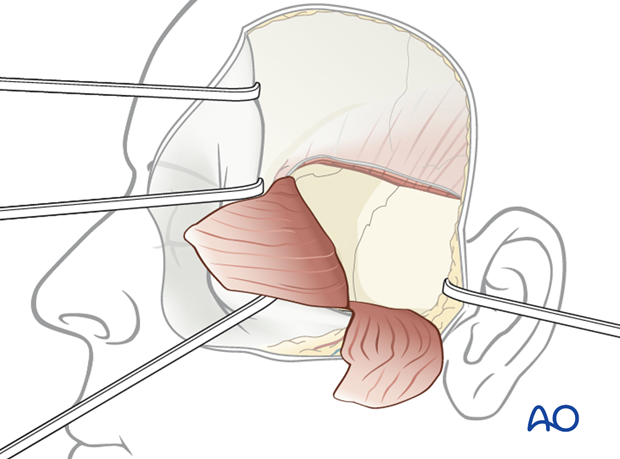
7. Craniotomy
Place a burr hole in the typical position for the lateral skull base. Take care that the burr hole is located under the temporalis muscle and as far basal as possible for cosmetic reasons.
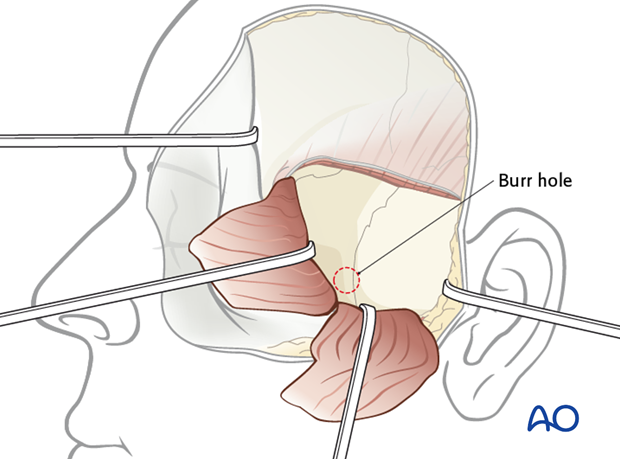
Perform a curvilinear craniotomy. According to the location of the fracture it is important to extend the bone flap down toward the base of the middle cranial fossa. Sometimes the optimal method is performing two thirds of the craniotomy with a craniotome and one third of the cut along the floor of the middle cranial fossa a high speed air drill. The bone defect at the skull base can be reconstructed using bone substitutes.

Elevation of the bone flap by means of elevators
Carefully detach the bone flap from the dura using a dissector, thereby elevating it.
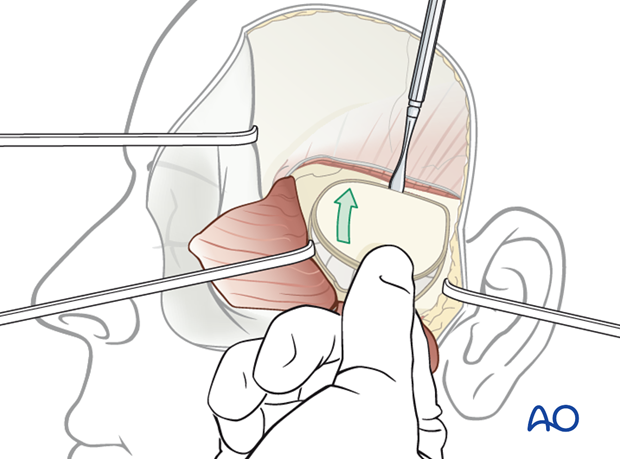
Carefully elevate the dura from the lateral skull base (middle cranial fossa). Elevate the temporal lobe as necessary to expose the fracture.
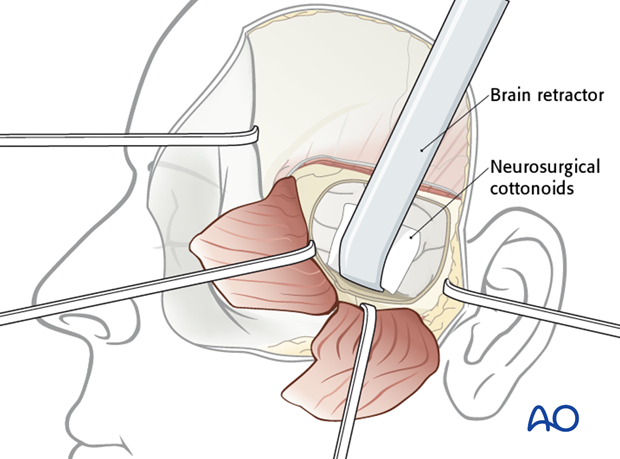
8. Exploration of middle fossa
After gentle retraction, the entire middle fossa can be explored.
